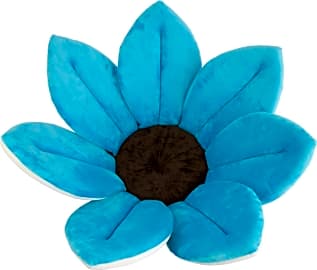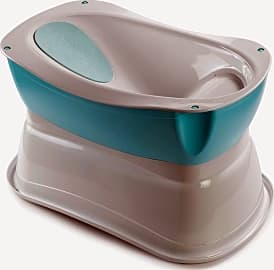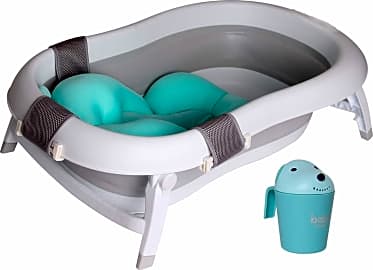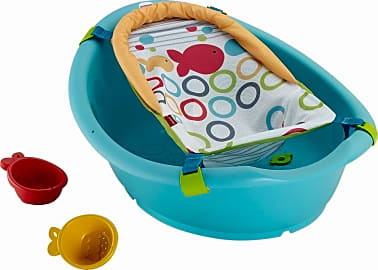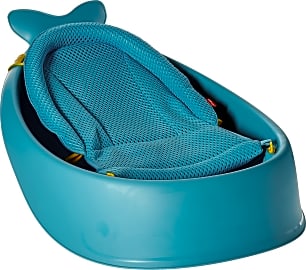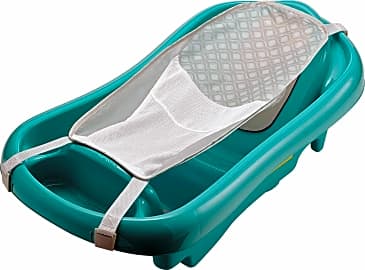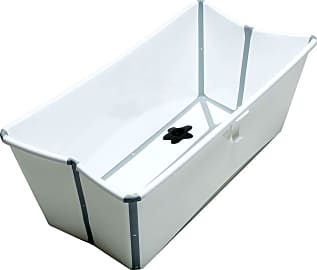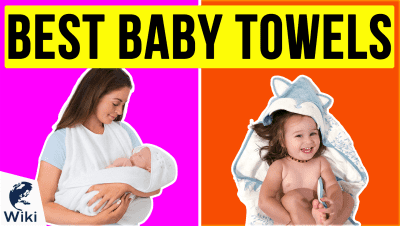The 10 Best Baby Bath Tubs

This wiki has been updated 39 times since it was first published in April of 2015. Bathing a newborn can be intimidating, but it can also become a good time to bond. The right baby bath tub will provide your little one with support and a sense of security, while giving you the confidence to get the job done safely. Our selection will help you choose the right one for your baby or young toddler, and includes options that are easy to pack for travel or visits to Grandma's house. When users buy our independently chosen editorial choices, we may earn commissions to help fund the Wiki.
Editor's Notes
March 19, 2020:
When choosing the best bath tub for your baby, keeping your child safe in the water is of the utmost importance. One of the best ways to ensure their safety is to choose a tub that is comfortable for you to work with, so that you're not distracted and your hands can stay on your baby at all times. Remember, it's also essential to have everything you need within arm's reach before your child goes into the water, including a baby-sized towel and your preferred baby soap.
When it comes to those first days and weeks home, most parents and babies find tubs that include a removable hammock-like accessory, like the Fisher Price Sling-N-Seat or the Skip Hop Moby, so that their movement is more limited and the head is well supported.
The Fisher Price Sling-N-Seat remains our top choice because it's so versatile and comfortable for newborns and every stage it serves. Not only does it have the newborn sling, but it also comes with and insert for babies who want to sit upright and play but might need a little extra support.
The Original Tummy Tub was removed from the list due to safety concerns. This product was not recalled, but concerns about the tub tipping over while in use were cited by Consumer Reports.
In its place we added the Summer Infant Right Height for families who want to keep bath time relegated to the bathroom, but dread getting down on their knees. With this option, parents can sit on a small stool or chair and safely clean their child.
We also added the Baby Brielle 3-in-1 as an alternative suitcase option to the Stokke Flexi. The Flexi is on the large side and best suited for older babies who'd like some play time, while the Baby Brielle has a cushy, supportive insert.
Bath Time Benefits
Sure, this level of interaction can happen at any time of the day, but your baby is far more likely to get your focused, undivided attention during bath time.
There are naysayers in the world who will argue that you don't need to purchase a baby bathtub for your new bundle of joy.
"Just wash them in the kitchen sink!" they'll say.
"We didn't have baby tubs and turned out just fine!" they'll scoff.
While it might be technically true that you don't need a baby bathtub to get your little one squeaky clean, a solid argument can be made for its benefits.
Unlike the good ol' days when your baby could be plunked into a bucket or large washtub, today's baby bathtubs are far more sophisticated. Many baby bathtubs on the market are designed to help your baby sit in an inclined position to keep water out of his face, but still make it easy for you to wash him. Some tubs come equipped with a newborn sling that's perfect for cleaning tiny babies with no independent head and neck control. Others are designed to fit perfectly over your kitchen sink to reduce strain on your back.
Using the right baby bathtub can make bathing your baby an enjoyable experience for both of you. Research has shown that there are a number of developmental and cognitive benefits to bath time for babies.
The most obvious benefit is the one-on-one interaction the baby gets with his mom or dad. Sure, this level of interaction can happen at any time of the day, but your baby is far more likely to get your focused, undivided attention during bath time. This can benefit his cognitive development and improve his thought and speech.
Bath time is also a great opportunity for sensory development. During a bath, your baby is learning about textures. He can play with his toys and feel the warm water wash over his skin. It is also great for reducing stress levels in both parents and baby and helping your little tyke relax enough to fall asleep for nap or bedtime.
Bath Time Fun and Safety
Believe it or not, there are a lot of rules out there for how to bathe your baby. Avoiding throwing him out with the bathwater is rule one. The rest of the rules and advice for bathing your baby are a little less obvious.
If it's uncomfortable for your elbow, it will be uncomfortable for your baby.
First of all, never leave your baby unattended in the tub. Even if you have chosen a tub with all of the bells and whistles and safety features available, there is no substitute for proper supervision. Second, choose a tub that is proven to be safe. The tubs featured here are some of the best on the market, and any one of them would be a good choice. Decide what your individual needs are, and choose your tub accordingly. Third, monitor the water temperature to make sure that it's not too hot or too cold for your baby. A good rule of thumb is to use your elbow to test the water. If it's uncomfortable for your elbow, it will be uncomfortable for your baby.
If you have a newborn, you will need to start out with a sponge bath. This will get your baby clean without risking infection at the umbilical cord. Until your baby is crawling around on the floor or voluntarily rolling in dirt, it's not necessary to give him a bath every day. A small baby bathtub is perfect for cleaning up your little one a couple of times a week with a gentle, warm bath.
A Brief History of the Baby Bathtub
Bathing and other forms of personal hygiene have been necessitties since the beginning of mankind. Since we are a resourceful, creative species, we have been coming up with new ways to get clean for centuries. Some ancient cultures used natural springs or public bath houses. The ancient Indians, Greeks, and Romans all used sophisticated plumbing systems so they could drink and bathe in clean water.
It was during this time that people, particularly those in high class society, began to worry more about their appearance.
Evidence was discovered on the Isle of Crete of one of the earliest bathtubs known to civilized man. It was five feet long and appeared to be a pedestal tub made from hardened pottery. It wasn't until centuries later that the use of bathtubs became common practice. Up until the early 19th century, many people bathed in public bath houses or used personal wash tubs that also doubled as tubs for laundry and dishes.
Even in the 19th century, claw foot tubs were used primarily by aristocrats so they could bathe to remain fashionable. It was during this time that people, particularly those in high class society, began to worry more about their appearance. Over time, technology advanced to keep up with demand, water heaters were invented, and indoor bathrooms became more commonplace. However, it wasn't until the mid-20th century that indoor bathrooms became the norm. These indoor bathrooms included indoor bathtubs, which eventually paved the way for the invention and marketing of baby bathtubs.



